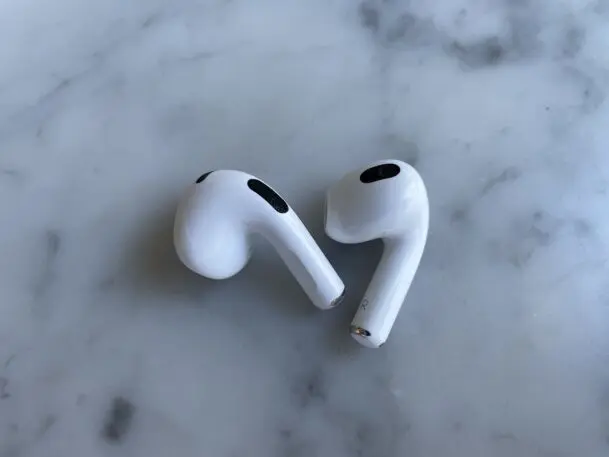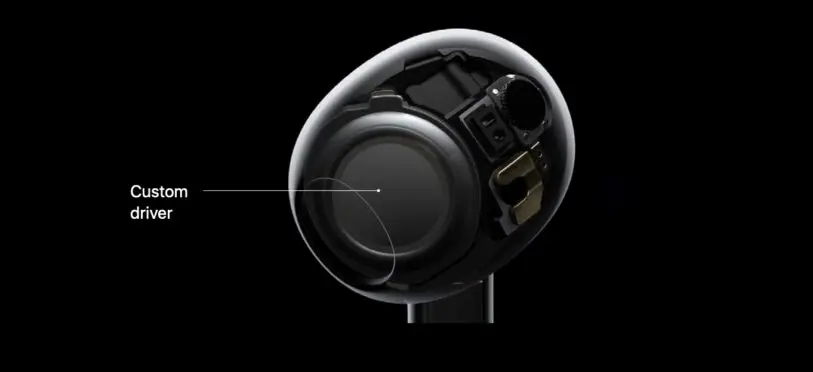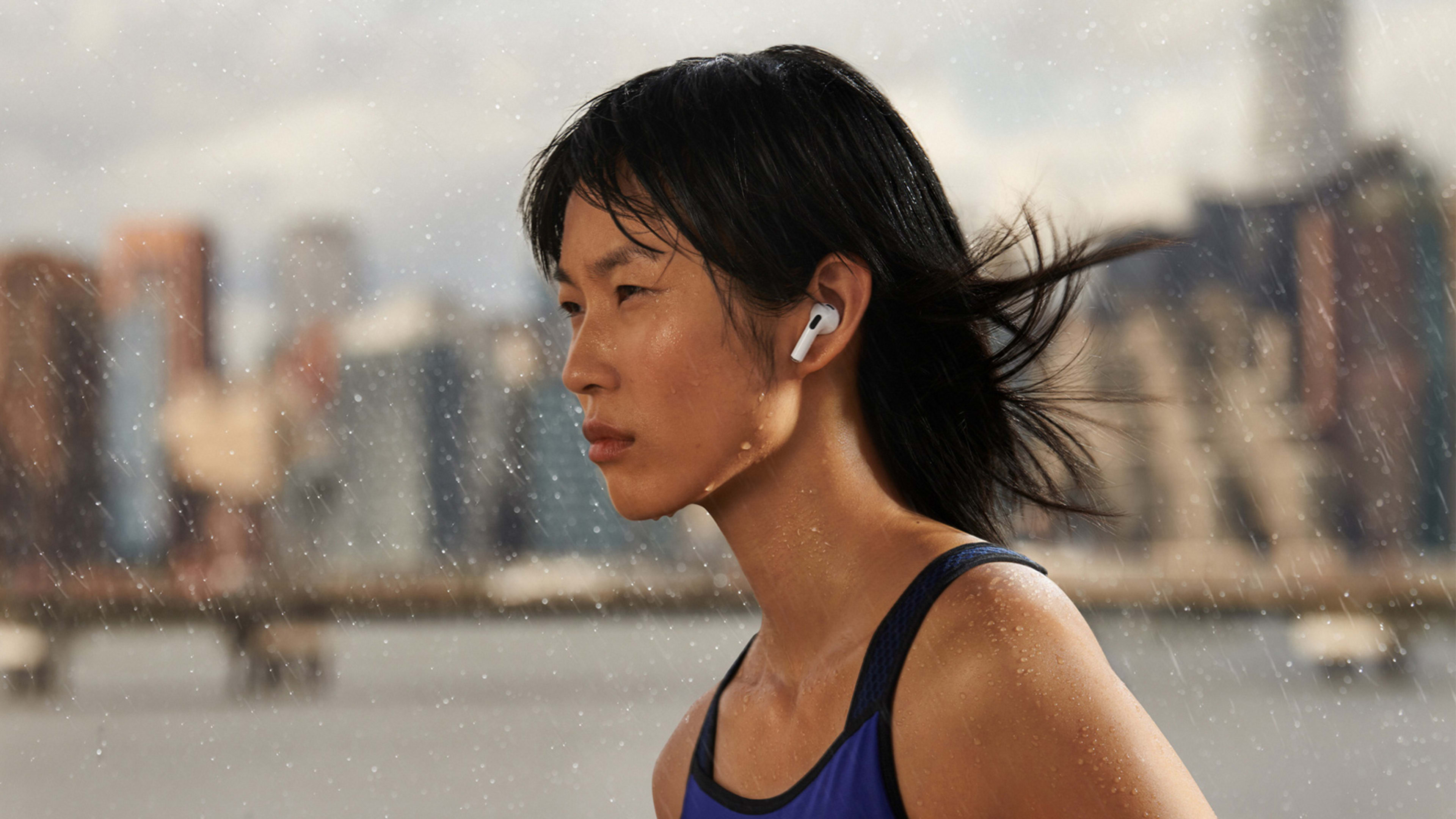When I go running, I take a whole set of wearables, from some high-priced running shoes to an Apple Watch to AirPods. They’re all important, but what’s going on in my ears may be the most important of all. That’s where the motivating voice of my running coach (Coach Bennett on the Nike Run Club app) is, as well as the podcasts and songs that distract me from the pain.
So when the AirPods get an upgrade, it matters. Apple recently announced a new version of its wireless earbuds—the third-generation AirPods, which went on sale for $179 this week—and I expect that a lot of runners will upgrade to them. After taking them out on a few runs, I believe that for most people they’ll be a worthwhile improvement over earlier AirPods. Still, those who are lucky enough to run with the $250 AirPods Pro, as I normally do, may find that they offer the best experience of all.
A new shape
The first- and second-generation AirPods were a bit of a disappointment for me. The one-size-fits-all design didn’t fit the shape of my ears, and as the buds moved around, their position had a direct effect on the sound quality of the music. Eventually I put some generic earbud foams over them, and that held them in place.
The most obvious change in the third-generation AirPods is the shape. Gone is the roundish design of earlier AirPods, replaced by a slightly elongated shape with a slight taper. That seems to agree better with the shape of my inner ear, no foam required. The posts that hang down from the earpiece are shorter—similar to those of the AirPods Pro—which also has a positive effect on the way the earphones sit in my ears.

I tried twisting the speaker vent at the front of the new AirPods earpiece (which is curved inward) up toward the opening of my ear canals, which made the bass response better. But my movement as I ran soon jarred them from that snug position.
I found that it’s best to gently place (not push) the earphones in the ear with the posts pointing straight down. Even if they don’t feel snug, at least they don’t go anywhere. And the sound quality is still reasonably good, even though the front vent where the sound comes out is a bit farther away from the opening of the ear canal.
Better bass than you’d expect
The AirPods Pro can deliver strong bass frequencies because the sound waves go directly into the small space between the opening of the ear canal and the eardrum; the seal prevents leakage. The third-generation AirPods have no such seal, but rather an open-air design that pushes sound toward the ear canal, not directly into it.
Because of this major difference, comparing them against the pricier AirPods Pro may not be quite fair. Still, the AirPods 3 fared better than I’d expected. To start with, the AirPods 3 have a newly designed driver (speaker) inside, which is capable of delivering some pretty punchy bass.
The new AirPods also have an algorithm called Adaptive EQ that it says dynamically adjusts the equalizer to the unique geometry of the user’s ear. Also available in the AirPods Pro and AirPods Max, it relies on an inward-facing microphone to inform the algorithm of what the user is hearing at any given time. Then it tunes the midrange and low-frequency output of the driver accordingly.
Apple’s original HomePod smart speaker was said to use a similar technology, but I’ve found it to be less than game-changing in real-world use. So I was skeptical about its use in the new AirPods. But I noticed that when the AirPods 3 speaker vent moved farther away from the opening of my ear canal, the earphones did seem to make an adjustment to mitigate the degradation in sound quality.
I suspect that the redesigned shape of the AirPods 3 and the new, punchier driver are the main reasons for the sound quality improvement over earlier AirPods generations. But I’m not discounting the impact of the Adaptive EQ feature; it’s just a bit hard to measure because you can’t turn it off.
Other improvements
There are a few other aspects of the new AirPods that matter to me as a runner.
Apple finally figured out how to get its devices to stop sending sound to AirPods when the earphones are not being used but also aren’t in their case. It used to drive me crazy when a phone call was interrupted because the phone had suddenly sent the call to my AirPods, which were loose in my pocket or somewhere on the tabletop or in the next room. The only way to stop that was to put the AirPods back in their case. Now, the company has added a new skin-detect sensor, which detects whether the AirPods are in use, in my ears. If they’re not in my ears, no device will send sound to them.
The battery life got a boost in the AirPods 3. Apple says the earbuds can play sound for up to six hours on a single charge—one hour longer than the second-generation AirPods. The new AirPods need five minutes in their charging case to support an hour of listening time, Apple says.
And finally, the latest AirPods (and their case) have an IPX4 rating, meaning they’re more resistant to sweat and dust than earlier generations. That means that sweat is less likely to leak in and damage the electronics, not that you can use the new AirPods underwater.

And, you know, running isn’t everything. I found that the new AirPods perform quite well in less-demanding use cases, like sitting in one place watching a movie or listening to music.
Overall, the AirPods 3 are probably a good bet for most people, even runners. Personally, however, I’ll stick with my AirPods Pro. It took me a while to get used to the seal they form in the ear, but they also offer both passive and active noise cancellation, which I like, because I run in a noisy urban environment.
On the other hand, it depends on where you run. If you share a route with other runners, bikes, or cars, you may want to stay more tuned in to the ambient sound of the world around you, and the open-air, non-sealing design of the AirPods 3 would give you that—and save you $70 over the AirPods Pro.
Recognize your brand’s excellence by applying to this year’s Brands That Matter Awards before the early-rate deadline, May 3.
